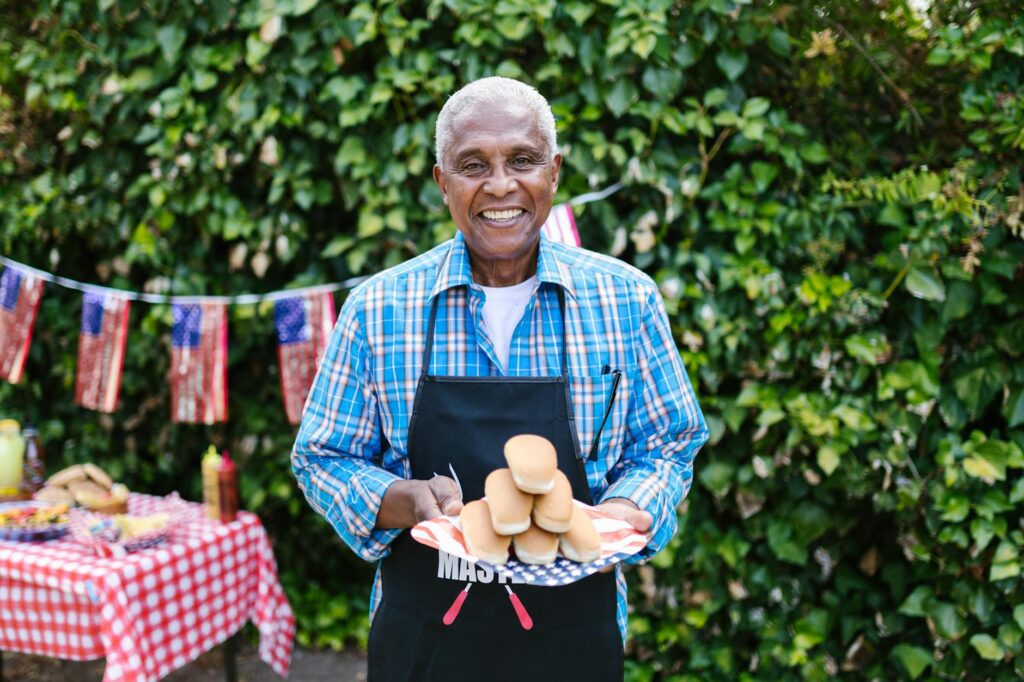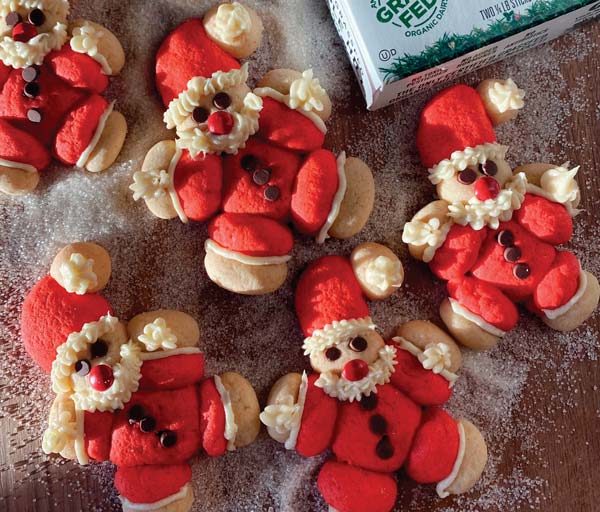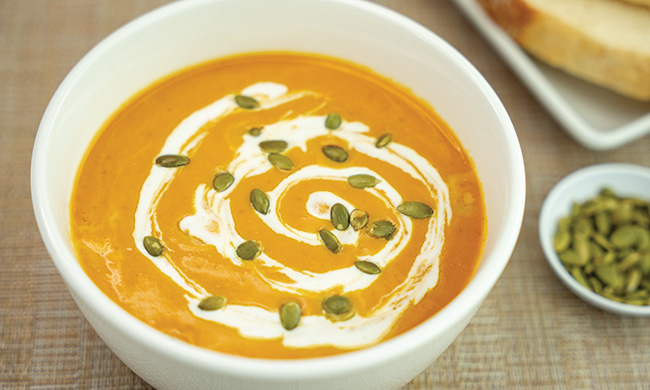Foodie News
Unity & Exhaustion: Johnsonville’s National Temperature Check Survey Uncovers Americans’ Yearning for Connection
New survey reveals Americans’ exhaustion with negativity and desire for connection. Johnsonville’s National Temperature Check uncovers unity amidst divisiveness.

Johnsonville, a popular sausage brand, has conducted a nationwide survey in partnership with The Harris Poll, to measure the thoughts and desires of Americans during a divisive and negative election year. The survey, titled “Johnsonville’s National Temperature Check,” has revealed some unexpected results that highlight Americans’ desire for unity and connection during a challenging time.
Exhaustion from the Negativity:
The survey reveals that an overwhelming 80% of adult Americans express exhaustion from the pervasive anger and negativity present in the media. With 9 out of 10 Americans desiring less negativity in news and social media platforms, it is clear that a significant majority is craving a more positive and uplifting environment. The survey also highlights that 84% of Americans believe that recent elections have not been bringing out the best behavior in people. These findings underscore the need for a shift towards a more hopeful and harmonious social atmosphere.
Missed Connections:
Despite the prevalence of social media and connectedness through technology, the survey demonstrates that Americans are feeling less connected on a personal level. A staggering 60% of respondents agreed that having fun with others has become harder lately. Furthermore, two-thirds of those polled disagreed with the notion that they are spending more time with others compared to five years ago. Additionally, 80% of Americans yearn to reconnect with individuals they miss dearly. These statistics reveal a deep longing for human connection that is intrinsic to the human experience.
Hanging Out Over Good Food:
Johnsonville’s survey indicates that sharing a meal with others can be a powerful catalyst for bridging gaps and fostering understanding. An impressive 91% of adults agreed that it is not necessary to agree with someone on every issue in order to enjoy a meal together. Moreover, 75% of Americans perceive people as inherently good. Interestingly, 71% also agreed that it is easier to spend time with individuals whose views they don’t necessarily agree with if they are sharing a meal they love. These findings illustrate the unifying power of food and the potential it holds for bringing people together.
Launching the “Keep It Juicy” Campaign:
In light of these survey results, Johnsonville is initiating a new brand campaign called “Keep It Juicy.” The campaign seeks to remind Americans to take a break, lower the temperature on negativity, and relish in good food with good company. By encouraging individuals to prioritize fun, togetherness, and enjoyment of delicious meals, Johnsonville aims to inject positivity back into the social fabric.
The “Keep It Juicy” campaign kicks off today with the launch of a new ad creative which can be viewed HERE, with additional initiatives to be announced at a later date.
To join the “Keep It Juicy” conversation, follow Johnsonville on Instagram, @Johnsonville and use the hashtag #KeepItJuicy.
For “Keep It Juicy” inspiration and more campaign extensions, visit www.johnsonville.com/keepitjuicy
The Johnsonville’s National Temperature Check survey unveils an important aspect of the American psyche – the desire for unity and connection. Despite the prevailing negativity and exhaustion, the majority of Americans yearn for a more positive, enjoyable, and connected society. Through initiatives like the “Keep It Juicy” campaign, Johnsonville aims to inspire individuals to embrace the joy of shared meals, fostering bonds with loved ones and even those with differing views. By emphasizing the importance of fun, food, and togetherness, Johnsonville seeks to encourage a more harmonious and inclusive America.
About Johnsonville, LLC
Johnsonville, LLC is a Wisconsin-based company that has become the top national sausage brand. They offer more than 80 different varieties of sausage and are present in over 40 countries, as well as over 75 professional, semi-pro, and college sports stadiums in the United States. Johnsonville was founded in 1945 and continues to be a family-owned business that employs and trains approximately 3,500 members across the globe. The company is driven by a team of passionate sausage-makers who are dedicated to their craft.
https://stmdailynews.com/category/the-bridge/
Discover more from Daily News
Subscribe to get the latest posts sent to your email.
Food and Beverage
Unwrap the Holidays: Whataburger Launches 12 Days of Whatacheer With Daily App Deals
Celebrate the holidays with Whataburger’s 12 Days of Whatacheer! Discover daily in-app deals, exclusive to Rewards members, from December 12–23. Unwrap new menu favorites, BOGO offers, and festive savings—only on the Whataburger App.
12 Days of Whatacheer: Festive Deals for Rewards Members
How It Works
- Who: Whataburger Rewards members (sign up in the app if you’re not already!)
- When: December 12–23, with a new offer every day
- How: Open the Whataburger App, claim the day’s deal, and enjoy with your next order
Holiday-themed graphic reading ‘12 Days of WhataCheer’ on a red background with white dots. Below the text are images of Whataburger menu items: a Cinnamon Roll, Onion Rings, a Whataburger, a Whatafresher, a Honey Butter Chicken Biscuit, and a Strawberry Shake.
Why Join the Whataburger Rewards Fun?
Get Started
Discover more from Daily News
Subscribe to get the latest posts sent to your email.
Recipe of the Week
Holiday Desserts Just Got a Dairy-Forward Upgrade
Holiday Desserts: From festive cookies to indulgent dips, these delicious desserts bring people together to create memories that will last a lifetime. If you’re looking to impress guests, Santa Cookies are the ultimate treat. For a unique twist, try Gingerbread Dip, featuring vanilla Greek yogurt made with 100% grass-fed organic milk.
Last Updated on December 17, 2025 by Rod Washington

Holiday Desserts Just Got a Dairy-Forward Upgrade
(Family Features) Holiday desserts set the stage for seasonal delight and add a touch of joy to gatherings. From festive cookies to indulgent dips, these delicious desserts bring people together to create memories that will last a lifetime. If you’re looking to impress guests, Santa Cookies are the ultimate treat. Made with Maple Hill Salted Butter, they’re rich, soft and full of festive spirit. For a unique twist, try Gingerbread Dip, featuring vanilla Greek yogurt made with 100% grass-fed organic milk. Whether you’re hosting or deciding what to bring to the potluck, Maple Hill’s 100% grass-fed organic dairy makes it easy to whip up desserts that are as wholesome as they are delicious. Rich in nutrients and free from GMOs, hormones and antibiotics, each product comes from farms that prioritize regenerative practices as nature intended. With a 40% healthier ratio of omega 3:6 and 40% higher levels of CLA fatty acids compared to traditional organic dairy, you can feel good about sweet treats at the holiday table. To find more recipes, visit MapleHill.com.
Santa Cookies
Yield: 14 cookies- 1 cup (2 sticks) Maple Hill Salted Butter, at room temperature
- 1/2 cup brown sugar
- 1 tablespoon vanilla extract
- 1 large egg, at room temperature
- 2 1/4 cups all-purpose flour
- 1/4 teaspoon salt
- 1 teaspoon red food coloring
- mini chocolate chips
- mini red chocolate-coated candies
- 1/2 cup (1 stick) Maple Hill Salted Butter, at room temperature
- 4 ounces cream cheese, at room temperature
- 1 teaspoon vanilla extract
- 2 1/2 cups powdered sugar
- Preheat oven to 350 F and line two baking sheets with parchment paper.
- In large mixing bowl, beat butter, sugar and vanilla until light and fluffy. Add egg and beat until combined. Add flour and salt; mix until dough begins to form ball.
- Remove 1 cup dough and set aside. Add red food coloring to remaining dough.
- From red cookie dough, make one 1-inch ball and five 1/2-inch balls. From plain cookie dough, make one 3/4-inch ball and five 1/4-inch balls.
- On prepared baking sheet, place red 1-inch ball and gently flatten until 1/2-inch thick. Attach four red 1/2-inch balls for arms and legs. Attach plain 3/4-inch ball for head and gently flatten until 1/2-inch thick. Attach plain 1/4-inch balls for hands and feet. Shape remaining red 1/2-inch ball into triangle for hat and attach. Repeat with remaining dough, arranging cookies 2 inches apart on baking sheet. Add chocolate candies for eyes and buttons.
- Bake 12-15 minutes, or until lightly golden.
- To make frosting: In medium bowl, beat butter and cream cheese until light and fluffy, about 3 minutes. Add vanilla and powdered sugar; mix until combined.
- To decorate: Place half of frosting in piping bag with small tip to line Santa’s arms and legs. Place other half in second piping bag with small star tip to add Santa’s beard, hat and hands. Put small dot of icing between eyes and beard and place red mini chocolate-coated candy on face for nose.

Gingerbread Dip
Servings: 8-12- 4 ounces cream cheese, at room temperature
- 1/4 cup brown sugar
- 1/4 cup powdered sugar
- 3 tablespoons molasses
- 1 container (16 ounces) Maple Hill Vanilla Greek Yogurt
- 1 teaspoon ground ginger
- 1 teaspoon ground cinnamon
- 1 teaspoon ground nutmeg
- 2 cups whipped cream
- graham crackers
- fruit
- In medium bowl using electric mixer on medium speed, beat cream cheese and sugars about 1 minute. Add molasses and mix until combined.
- Add Greek yogurt, ginger, cinnamon and nutmeg; beat until combined. Fold in whipped cream and mix until fully incorporated. Refrigerate 1 hour before serving or overnight.
- Serve with graham crackers and fruit.
At our core, we at STM Daily News, strive to keep you informed and inspired with the freshest content on all things food and beverage. From mouthwatering recipes to intriguing articles, we’re here to satisfy your appetite for culinary knowledge.
Visit our Food & Drink section to get the latest on Foodie News and recipes, offering a delightful blend of culinary inspiration and gastronomic trends to elevate your dining experience. https://stmdailynews.com/food-and-drink/
Discover more from Daily News
Subscribe to get the latest posts sent to your email.
Food and Beverage
Usher in Cool Weather with Easy Pumpkin Soup
Pumpkin may be a classic fall flavor, but there’s no reason you can’t satisfy your craving for savory comfort foods all year long. Its smooth, creamy texture is a go-to ingredient for a variety of recipes, including this heartwarming and simple easy Pumpkin Soup.

Usher in Cool Weather with Easy Pumpkin Soup
(Family Features) Pumpkin may be a classic fall flavor, but there’s no reason you can’t satisfy your craving for savory comfort foods all year long. Forget spiced latte; with its wholesome nutrition and plenty of earthy flavor, pumpkin is the perfect ingredient for all kinds of flavorful dishes. It may inspire a warm, fall feeling but it’s much more than a seasonal product. Pumpkin puree can be enjoyed all year long mixed into your favorite baked goods, stirred into chilis or even scooped into your morning smoothie. The smooth, creamy texture of Green Giant 100% Pure Pumpkin, made in the United States with premium quality in mind, is a go-to ingredient for a variety of recipes, including this heartwarming and simple Pumpkin Soup. Simply simmer the pumpkin puree with coconut cream, vegetable stock, garlic and ginger for a soup that is comfort in a bowl. Explore new ways to enjoy seasonal recipes at greengiantvegetables.com.Watch video to see how to make this recipe!
 Pumpkin
Soup Cook time: 10 minutes
Servings: 4
Pumpkin
Soup Cook time: 10 minutes
Servings: 4- 1 can (15 ounces) Green Giant 100% Pure Pumpkin
- 1/2 cup coconut cream
- 1 cup vegetable stock
- 1 tablespoon garlic paste or 1 teaspoon garlic powder
- 1 tablespoon ginger paste or 1 teaspoon ground ginger
- salt, to taste
- pepper, to taste
- coconut rice, for serving (optional)
- bread, for serving (optional)
- In saucepan over medium heat, combine pumpkin, coconut cream, vegetable stock, garlic, ginger and salt and pepper, to taste. Stir until well incorporated, cook 10 minutes.
- Serve over coconut rice or with bread, if desired.
The fate of Lucky Supermarkets in SoCalLink: https://stmdailynews.com/the-fate-of-lucky-supermarkets-in-socal/
Discover more from Daily News
Subscribe to get the latest posts sent to your email.

